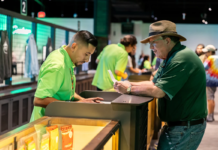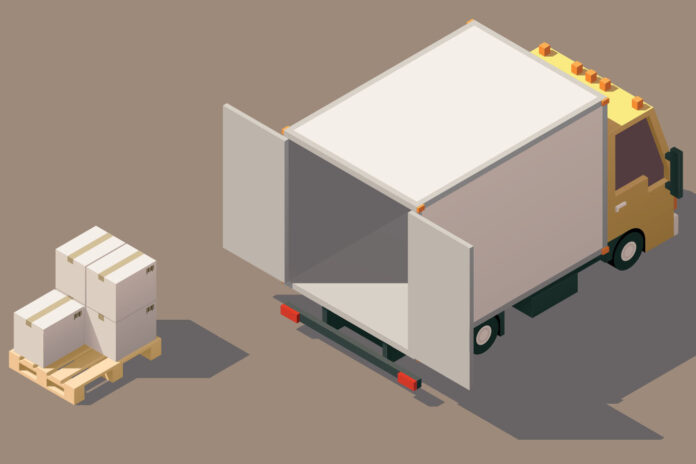If you’re currently operating in this tempestuous industry, you likely don’t need to be told we’re in the midst of another periodic downturn. The publicly traded multistate operators (MSOs) have seen their stock prices plummet, venture capital has slowed to a drip, and LinkedIn hashtags have transformed from #hiring to #opentowork.
At a moment like this, surviving the slump means reining in overhead, cutting unnecessary spending, and putting your firepower behind what drives revenue. And this means investing in sales.
A great sales team selling a clearly differentiated product can open doors and get you the necessary velocity to not only survive but also thrive and capture market share from your peers who haven’t balanced their profit-and-loss sheets yet. Without a strong sales team, you will burn through precious cash reserves and struggle to keep moving forward. Sales are the gasoline on which your business runs.
Even without taking the looming recession into account, 2022 is an opportune moment to assess wholesale strategies. Most of the industry’s biggest companies are making wholesaling a priority. Major brands are wading into new markets and establishing processes to replicate their success in their home states, and it has never been more important for new brands in mature markets to have a dialed-in sales process. The margin for error—like all other margins—is shrinking fast.
We reached out to some of the highest-grossing sales directors, distributors, and consultants in the industry to break down the key steps to successful wholesaling and shed some light on how to generate sustainable sales growth.
Pricing
To avoid starting from the point of your brand’s conception, let’s assume your products are good, address market desire, and are adequately positioned against the competition. The next most important consideration you should target is pricing.
The delicate balance involved in setting prices that entice buyers and best the competition while withstanding downward pressure on margins is a defining challenge that will have a greater influence on success than just about anything else. Pricing strategy should begin with an intimate knowledge of costs.
“Ask yourself, ‘What’s the lowest possible price I could sell this for?’ and start from there,” said Michael Beaudry Jr., vice president of business development for California distributor HERBL. The full-service company has a forty-person statewide sales team and represents more than 3,200 products from thirty brands. The team’s experience selling into premier dispensary chains like Stiiizy and MedMen has informed their belief that baking flexibility into margins will help convince multi-store buyers to take on products and allow brands to run the kind of deals customers have all but come to demand.
“Large chains have the ability to drive prices down because they’re buying in much larger quantities than mom-and-pop shops,” said Beaudry. “Building in margin flexibility is really important for opening those key accounts.”
The sentiment was echoed by East Coast sales gun Don Sprenkle, who joined the industry after fifteen years in the fresh-cut-flower business and built and managed wholesale teams for MSOs like Ascend Wellness Holdings and Curaleaf. Sprenkle, founder of wholesale, data, and field marketing agency Collaborators, believes in ensuring whoever runs wholesale operations is intimately familiar with product margins and cost of goods so big deals can be based on data. “They need to know the floor they can take the price to in order to close an important account,” he said. “A lot of cannabis businesses aren’t empowering their sales team with this kind of information, and it hurts them.”
Cost of goods sold (COGS) and taxes can vary considerably from state to state. For MSOs selling the same products into different markets, being pliable is better than maintaining a consistent price from coast to coast. Melissa Wagamon, Cresco’s regional president of the Great Lakes region, the company’s flagship wholesale territory, noted cannabis shares similarities with the beer industry in this regard. “Everything is very much state-specific, because the markets are so different. It’s a lot like beer,” said Wagamon, who joined Cresco in 2019 after spending six years at MillerCoors. “While beer obviously can have the same packaging across the whole country, pricing and promotion and all of those things are regulated at the state level, so you have to be pretty different by state.”
Teams
After defining margin ranges and setting prices, it’s time to assemble a sales team that can open and grow new accounts. Debate is ongoing about whether the best sales executives come from within the industry—equipped with existing relationships, familiar with common lingo, accustomed to turbulence, etc.—or from traditional consumer-packaged-goods (CPG) backgrounds brimming with conventional sales techniques and multistate experience.
Mitchell Osak is a Toronto-based cannabis consultant and prolific LinkedIn sage. He believes a blend of what he dubs “roots and suits” can give companies an edge. “The blue-chip salespeople can learn the complexities and nuances and develop the passion from the the hardcore cannabis folks,” he said. “The best sales teams have a mixture of passion for the industry and the ability to communicate and sell in a competitive environment.”
Sprenkle, on the other hand, is adamant the best sales reps cut their teeth in the illicit market. “I very rarely hire a wholesale rep who hasn’t sold weed on the streets,” he said. “About 80 percent of the people I’ve brought into the legal industry have played hardball at some point.”
Sprenkle is skeptical that a career in big-brand CPG prepares sales professionals for the cannabis industry, particularly if the passion isn’t there. He recounted working alongside an executive who came from the corporate division of Dunkin’ Donuts. “He lasted four months,” Sprenkle said. “He said to me, ‘Don, how the hell are you still there?’ I said, ‘You don’t understand, man. It goes so much further than the job for me. This is my life.’”
The anecdote is far from unique, and it speaks to a challenge companies face when recruiting from outside the industry: retention. “You could recruit all the top people, train them, design the perfect quota system, and then they leave you because they’re fed up with the industry, they can make more money with somebody else, or it’s just too difficult in cannabis,” said Osak.
When it comes to building a team nationally, most MSOs share a similar structure. Guiding the strategy is a national wholesale executive who typically is accountable to the chief revenue or growth officer. They are supported by territory or regional managers who cover a cluster of states, and then each state has at least one sales rep and a layer of sales support staff. As Florida-based MSO Ayr Wellness has built its wholesale operation, Chief Marketing Officer Jeff Finnerty has sought to weave his marketing and sales teams together to ensure these departments work in sync. “I have a [vice president] of brand activation and a national brand ambassador leader who work with the sales teams and the brand ambassadors to recreate the brands and the brand-specific programming with consistency in each of these markets,” said Finnerty, a former national sales director for Coca-Cola.
Most executives with whom we spoke agreed on the importance of incentivizing sales teams by paying commission on top of a competitive salary. According to Osak, how the compensation is split should be informed by the competitive environment and the maturity of the local market. “In fast-growing markets, I’ve seen higher base salaries and lower commission,” he said. “But in more mature markets, businesses tend to favor a commission-based structure so the team is properly incentivized to go out and fight for every sale and get sell-through going.”
Finnerty subscribes to a similar philosophy. “I am a believer that if you tie sales performance to uncapped or at least extremely high potential income, you get everybody’s best efforts,” he said. However, he added, being a great salesperson is about more than monetary rewards. Sales professionals need to believe in what they’re selling, though he said he feels that is not a problem in cannabis. “What I’ve found is everybody from our budtenders to our wholesale account executives come pre-wired and excited about what they’re selling,” he said.
Product assortment
It stands to reason that the wider the variety of stock-keeping units (SKUs) and brands a salesperson or distributor offers, the higher the likelihood something on the list will capture a retail buyer’s attention.
“The big benefits of selling multiple brands and multiple SKUs are I have many choices to offer, and if you don’t like this one, maybe you’ll like this one,” said Benjamin Mitchell, a sales consultant and cofounder of edibles and tinctures manufacturer Ciencia Labs. “It also creates an opportunity to have a more noticeable in-store presence without buying shelf space and gives consumers a variety of choices, thus increasing the likelihood they’ll see something they like.”
Selling a portfolio of brands across a variety of form factors and need states is much more commonplace in established CPG industries. In markets where distributors don’t play an integral or mandated role, the cannabis industry could see a three-tier wholesale model—manufacturers, wholesalers, retailers—in a bid to simplify things for the manufacturers and retailers. “The way it works in mainstream industries is that manufacturers make their products, they all go to a wholesale house, and that wholesaler sells everybody’s product,” said Sprenkle. “It just makes [the process] simpler. [A buyer] can call one wholesaler, get all the deals done, and receive a single delivery.”
Edibles manufacturer Kiva is currently in nine states and typically enters new markets by launching with its flagship chocolate or gummy lines to build a base of stores before introducing products like its Lost Farm chews or Petra mints. “When we launch, we try to pick and choose the most impactful SKUs from the start,” said Ben Schultz, general manager of expansion markets. “By and large, that’s the gummies, but we always bring the full portfolio with us. We’re not just a gummy brand offering our singular product line. We have chocolate bars, chocolate pieces, mints, gummies, and live-resin chews. We offer something for every consumer and are able to be the one-stop shop for a retail buyer filling their shelves.”
Opening doors
There was a time not so long ago when the metric most important to brands was the number of retailers that stocked their products. Today, a lower number of quality accounts, particularly in mature markets, has superseded the land grab, or what Osak called the “spray and pray” mentality. “Your target consumer is not in every retailer in every market,” he said. “By focusing on being effective at selling more product into the right retailers and thus to the right consumers, you start to realize you don’t need to reach everybody. You need to drive results from an efficiency standpoint.”
Since California legalized adult use in 2018, HERBL has noticed a dramatic shift toward Osak’s point of view. According to Beaudry, brands have pivoted from high-door and low-volume to low-door and high-volume as they reckon with the challenges of serving accounts in an expansive, expensive state. “Brands are realizing it’s better to be in half the number of good-quality accounts,” he said. “This way, they can focus on trying to be the best-selling brand or one of the best-selling brands in those 200 doors rather than struggling to get sell-through in 400 stores.”
Mitchell agrees … with one important caveat. “It’s definitely easier to support ten large accounts than 100 small accounts, but there’s opportunity in both,” he said. “Large accounts give you the revenue to support the in-store sale immediately and give you more possible consumers per hour of in-store marketing time. But small accounts that buy a few hundred dollars a month generally don’t expect much from a brand and don’t need a lot of handholding.”
But Ryan Crandell, chief revenue officer for MSO MariMed, which wholesales its brands in seven states, advocates opening as many doors as possible. “Spread your net as wide as you can to support those accounts,” he said, noting as an example that the company’s products are sold in about 200 of Massachusetts’s 220 shops. “I believe there are a lot of consumers that will never go to a dispensary farther than five miles from their house on a regular basis, and I don’t want to overlook customers. I want our products distributed to every possible store in every state we’re in.”
It’s also notable that MSOs with a retail footprint in several states can leverage one another’s networks by agreeing to stock each other’s products and box out independent brands. “That’s a huge problem right now,” said Kiva’s Schultz. His company doesn’t operate stores. “MSOs with stores can basically say ‘I’m not interested in stocking your brands unless you can offer me something for my products too.’ We don’t have the luxury to do that because we don’t own retail, but what we can offer are great products from a brand consumers know and trust.”
Sell-through
Once companies have sold their wares into dispensaries, it’s imperative they have a strategy for increasing sell-through. In mature markets like California and Colorado, long gone are the days when products moved on their own. Today, all brands need a strategy to help stores sell their items.
The most tried-and-true approach for increasing sell-through is correctly training and incentivizing dispensary staff. “Think of it like a ground game that revolves largely around influencing the budtender. You are not just educating them on your product but also helping them position your product versus your competition,” said Osak. “I’m a big believer in properly engaging the budtenders, store managers, and other frontline staff on a regular basis.”
MariMed’s Crandell also places considerable emphasis on working closely with frontline employees. “We’ve got a virtual budtender training program we’re rolling out in forty accounts in Massachusetts and Maryland, with an incentive program for folks to actually participate in the training and a rewards program where we can literally pay budtenders 25 cents or 50 cents per unit sold,” he said.
Much like using intro deals to open new accounts, buy-one-get-one (BOGO) deals are a useful tool for moving product, though becoming overly reliant on discounts has its detractors. “I don’t love deals, because it’s like an arms race,” said Osak. “Once you get into that world, it’s hard to break out of it. But if everybody else is doing it, you’re going to have to participate. I always encourage my clients to make sure they have a differentiated, high-quality product that can at least sell on its own without a discount.”
Mitchell of Ciencia Labs has found BOGOs to be the most reliable means of getting both dispensaries and consumers to buy, as long as margins support it. “When you have high margins and products people like, you’re able to do deals like this without a loss and with the knowledge that the more people who try your products, the more people who will keep buying your products,” he said.
According to Schultz, Kiva uses promotions strategically to launch new products or open new accounts, though the brand is careful not to “train” its customers to shop only on deals. “We want to drive consumer trials, and in a competitive landscape, a discounted price to consumers is an important lever to drive that first purchase,” he said. “However, Kiva is known for high-quality products, and once consumers try them, we tend to see steady reorders with or without price promotions.”
Takeaways
While there are many strategies for selling into stores and making products move, industry insiders seem to agree on key sales tenets all brands should embrace.
Budtenders remain an integral part of the sales process. The problem here is dealing with budtender turnover, with as many as 24 percent of budtenders leaving within their first thirty days of employment. The only way around the challenge is to keep sending product samples and swag, keep cycling around for training, and keep treating them like an extension of your own team instead of a necessary evil.
“We assume there’s going to be some turnover, so we keep going back to re-educate stores,” said Cresco’s Wagamon. “Something we’ve noticed is a budtender might leave one store, but you’ll see them at another store. So even if you’re losing someone at one account, you gain them somewhere else.”
Sprenkle encourages his team to pay close attention to the retail staff as part of the sales process. “A good wholesale rep keeps a tally of how many budtenders there are at each store,” he said. “The really good [wholesale reps] write [the budtenders’] names down so they’re always tracking the movement in each store.”
Another tenet: Deals and discounts work. Customers are extremely price-sensitive, particularly during economic recessions, and dispensaries in mature markets need to compete with a booming illicit market. It’s essential brands provide promo products that allow dispensaries to keep prices low and value high.
The biggest takeaway? The wholesale sales team must be in love with the product and genuinely believe in the mission of bringing cannabis to the masses. While it’s a well-worn maxim that a great salesman can sell anything, this industry is fraught with uncertainties, inconsistencies and, at times, incompetencies. Regardless of how well a sales team can deliver, if they don’t believe in the mission, they might not have the stomach for the long and bumpy road ahead.










[…] some trends we’re seeing include price compression impacting both wholesale and retail. Retailers are developing more aggressive marketing tactics. And lastly, and arguably […]
[…] retail margin, the industry could see $700 million in retail marginal revenue and $1.4 billion in wholesale sales. Under the base case, adult-use sales would generate $126 million in new state sales tax revenue […]
[…] run the greenhouses efficiently,” he said. “And then anything I produced above that, I could wholesale or not wholesale, but I didn’t need to produce more than that baseline demand because I was achieving economies of […]
[…] is especially beneficial in branding and marketing efforts, but it’s also a key trait of good salespeople. Top performers consistently say their secret is to develop an authentic relationship with each […]
[…] the West Coast (and in other mature markets like Colorado and Michigan) over the past few years has caused wholesale prices to plummet. In California, quality greenhouse and full-term sungrown pounds are selling for as little as $500. […]
[…] a regulatory framework for CBD in place, the distribution channels where CBD is sold are expected to remain largely the same,” said Matt Zehner, insights manager at […]
[…] downsizing followed a partial withdrawal from California and exiting the Nevada wholesale market last year. The company also has reduced production capacity across multiple markets “to match […]
[…] chain. The 9th annual event has opportunities for everyone from farmers and producers to retail and wholesale buyers, processors, equipment manufacturers, and technology […]